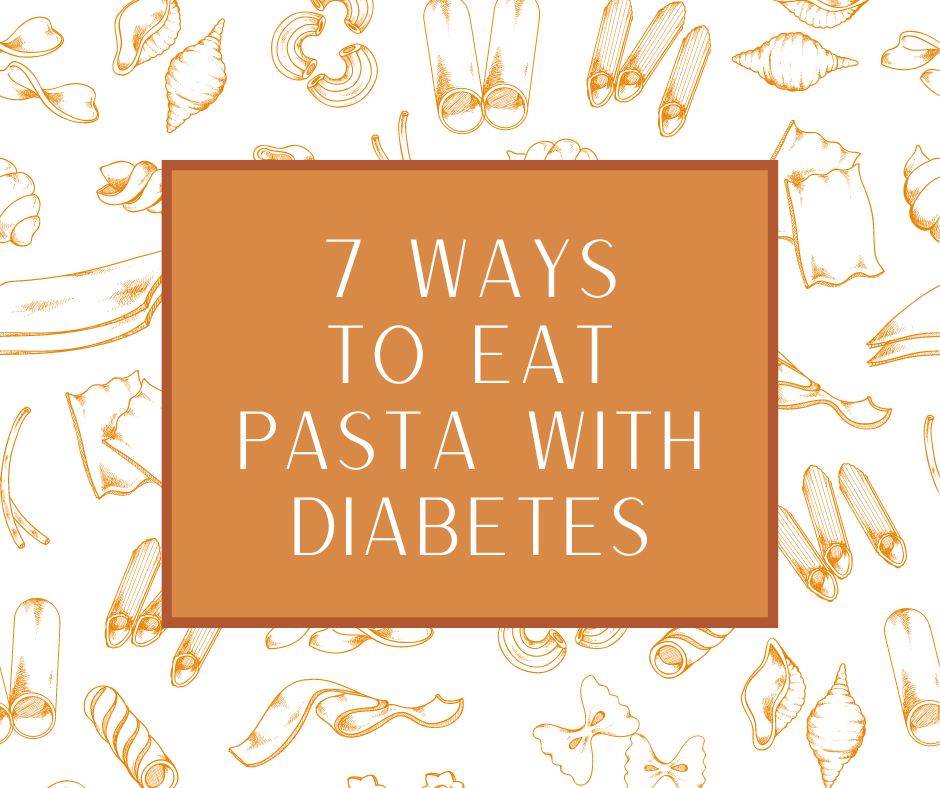
If you’re living with diabetes, then certain carbohydrates we know and love are suddenly bad words. Pasta, in particular, is one food many of us are reluctant to give up because of how tasty it is. However, as long as you practice mindful eating and are open-minded to changes to your usual pasta order, eating pasta shouldn’t be too much of a bother. Yes, there are definitely ways to eat pasta that won’t worsen your diabetes!
Below are some of the ways you can still eat pasta even with diabetes.
1. Switch to Whole Grain Pasta
Most white pasta noodles are made of semolina flour. Semolina flour is made of durum wheat that has been processed quite a bit, removing most of the nutrients that make whole grains so nutritious. You want to switch to whole-grain pasta because you’re getting all of that healthy goodness, including vitamins, minerals, and fiber!
Fiber is great because they manage your blood sugar levels. They’re hard to digest, meaning carbohydrates don’t get absorbed as quickly into your blood. They also keep you fuller for much longer and less inclined to binge eat.
2. Add More Vegetables
If you want to make your pasta dish weightier without adding too much pasta, you should add more vegetables instead. It would be even better if you used low-calorie vegetables so you can get all the vitamins and minerals without the added carbohydrates. Vegetables like these include broccoli, asparagus, arugula, olives, zucchini, and mushrooms!
3. Use Oil-Based or Tomato-Based Sauces
Pasta dishes that are loaded with cream, butter, and cheese might be super tasty and comforting, but they take a major toll on your body. They’re not just loaded with carbohydrates—they’re also full of saturated fats that clog the arteries!
Cream pasta also tends to be packed with sodium. The creaminess masks the saltiness, making you eat more sodium than is healthy. For example, a plate of Chicken Alfredo from the Olive Garden has a whopping 1570 calories! That’s almost a day’s worth of calories in one portion!
Instead, go for healthier options like oils or tomato sauces for your pasta. Olive oil is a good one since it’s full of monosaturated fats that increase good cholesterol in your body. Simple marinara sauces are also great if they have no added sugar.
4. Play Around with Veggie Noodles
Veggie noodles are here to stay! They are fun ways to incorporate more vegetables into your diet. Instead of using pasta for your dishes, you can use thinly sliced zucchini, carrots, squash, cucumbers, and more. Then, use them just like you would regular pasta and add sauces and toppings. They might not taste and feel like regular pasta, but trust us—they’re just as tasty.
If veggie noodles aren’t your thing, you can also try pasta with vegetables mixed into the dough. They still have the feel of regular pasta; they just have more vegetables in them.
5. Control Your Portions
Having diabetes shouldn’t stop you from enjoying your favorite pasta, so eat it. You just have to practice self-control and only eat what your body can handle. The number of carbohydrates you should eat will depend on your activity level, age, and weight. However, many dietitians would strongly recommend eating between 30 to 60 g of carbohydrates per meal.
This can be hard to do if you’re not mindful. If you eat off of large plates or use large pans, for example, you can end up overeating. You also might think you’re not eating lots when you’re dining out, but you just can’t be too sure. So, it’s best to cook for yourself at home so you can count your macros properly.
6. Have Lean Proteins
Aside from adding vegetables to your pasta to make it weightier, you can also add lean proteins. Proteins take much longer to digest in the stomach, which helps regulate your blood sugar levels. They also make you feel fuller faster, which makes you eat less of your meal or prevent you from getting second helpings.
Just remember to choose your proteins wisely. Red meats like beef and pork are full of fat and are bad for your heart health—this is especially important since your heart health will already be compromised by diabetes. Instead, opt for something leaner like chicken breast, ground turkey, or even tofu, legumes, and beans.
7. Skip the Extra Cheese
You’ll be hard-pressed to find anybody that doesn’t love cheese. Cheese is an essential ingredient in many dishes worldwide. However, that doesn’t mean you should go crazy with it. As we’ve mentioned before, you can still enjoy your favorite foods by having them in moderation. One of those foods is cheese.
Some cheeses have a ton of calories that you wouldn’t expect. Ricotta cheese, for example, has 50 calories and 3.5 g of fat in just one ounce! So, if you’re loading a ton of ricotta cheese between your lasagna sheets, you’re definitely going way overboard. Instead, you should go for more cheese like mozzarella and parmesan. They add a ton of flavor and gooiness to your pasta without having to add too much.



